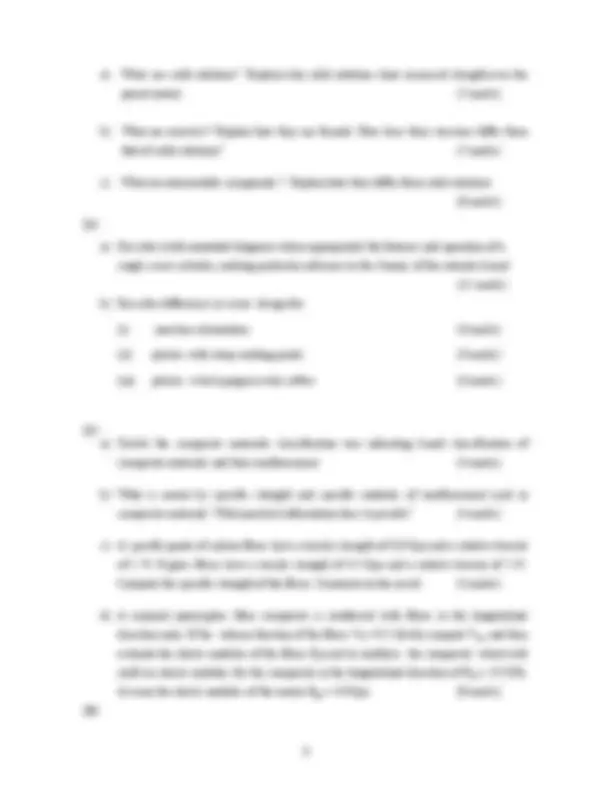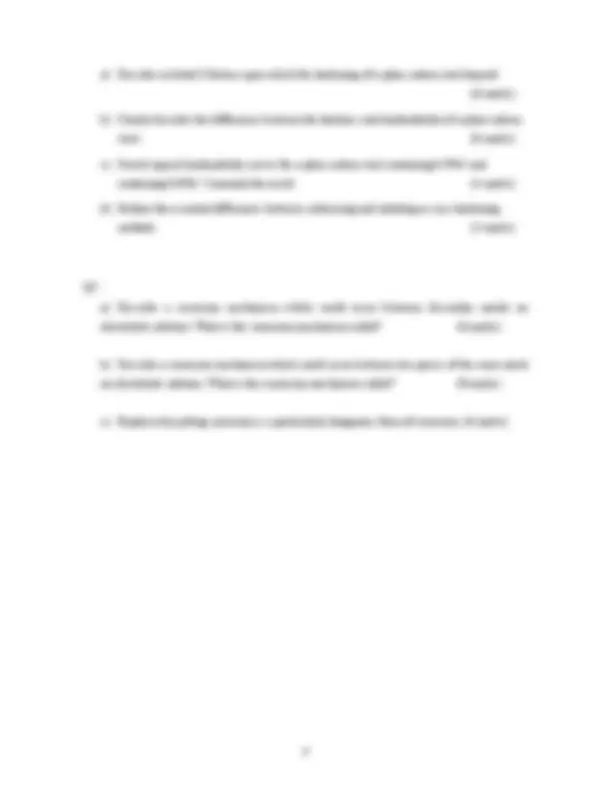




Study with the several resources on Docsity

Earn points by helping other students or get them with a premium plan


Prepare for your exams
Study with the several resources on Docsity

Earn points to download
Earn points by helping other students or get them with a premium plan
Community
Ask the community for help and clear up your study doubts
Discover the best universities in your country according to Docsity users
Free resources
Download our free guides on studying techniques, anxiety management strategies, and thesis advice from Docsity tutors
A past exam paper from the higher certificate in engineering program at cork institute of technology, focusing on mechanical engineering. The exam consists of multiple-choice questions and includes topics such as thread cutting, metallurgy, extrusion, and composite materials. Students are required to answer five questions within three hours, using separate answer books for each section and annotated diagrams where applicable.
Typology: Exams
1 / 4

This page cannot be seen from the preview
Don't miss anything!



(NFQ Level 6)
Instructions Answer FIVE questions. All questions carry equal marks. Question 1 must be answered. Use separate answer books for each Section.. Use annotated diagrams where applicable.
Examiners: Mr. M. Daly Mr. R. Kennedy Dr. G. Kelly Mr. J. Connolly Dr. P. Delassus
Q1. (a) A left-handed screw thread is to be cut on a centre lathe. Describe i. how a single-point tool can be set square to the work axis (3 marks) ii. the movements necessary to achieve a left-handed helix (12 marks)
(b) If the compound slide is set to half the included angle of the thread for the operation, calculate the distance which the tool must be fed in, in order to obtain a thread depth of 1.2mm. (5 marks)
a) What is an equilibrium diagram? In the context of this course identify three equilibrium diagrams, and give one example of an alloy system for each diagram. (6 marks)
b) Figure Q2 reproduces the Nickel Copper phase equilibrium diagram. Which phases do you expect at the following points of the tin lead system?
(i.) 70%Ni 30%Cu at 1250°C (ii.) 20%Ni 80%Cu at 1250°C (4 marks)
c) At the point indicated by 60%Ni 40%Cu at 1325°C, indicate the phases present and estimate their composition. (6 marks)
d) At the point indicated by 60%Ni 40%Cu at 1325°C, using the level rule estimate the relative weight of the of the liquid to solid. (4 marks)
0 10 20 30 40 50 60 70 80 90 100 % Ni
100 90 80 70 60 50 40 30 20 10 0 % Cu
0 10 20 30 40 50 60 70 80 90 100 % Ni
100 90 80 70 60 50 40 30 20 10 0 % Cu
a) Describe in detail 3 factors upon which the hardening of a plain carbon steel depend. (6 marks) b) Clearly describe the differences between the hardness and hardenability of a plain carbon steel. (6 marks) c) Sketch typical hardenability curves for a plain carbon steel containing 0.3%C and containing 0.6%C. Comment the result. (4 marks) d) Outline the essential differences between carburising and nitriding as case hardening methods. (4 marks)
a) Describe a corrosion mechanism which could occur between dissimilar metals an electrolyte solution. What is this corrosion mechanism called? (6 marks)
b) Describe a corrosion mechanism which could occur between two pieces of the same metal an electrolyte solution. What is this corrosion mechanism called? (8 marks)
c) Explain why pitting corrosion is a particularly dangerous form of corrosion. (6 marks)